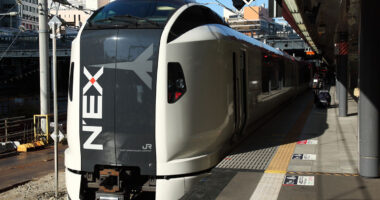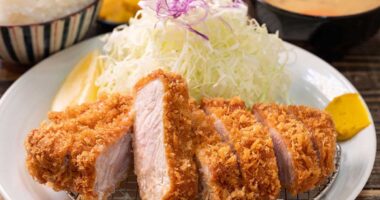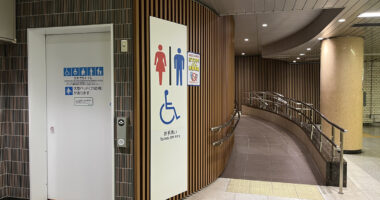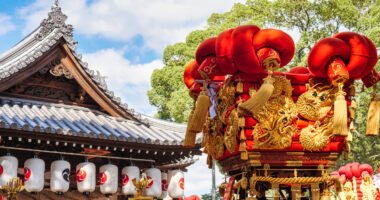Travelers heading to Kyoto often wonder how well their IC cards will work once they leave the Tokyo area. As Japan continues to integrate contactless payment systems across cities, navigating public transportation with just a tap has become more common—and more convenient. In Kyoto, this convenience extends to many places, especially for those using cards like Suica.
From city subways and JR lines to select buses and shops, Suica offers broad—but not universal—compatibility throughout Kyoto and the greater Kansai region. While the card opens access to many services, there are still a few limitations that can catch travelers off guard. Knowing where the card works and where it doesn’t helps avoid confusion when getting around.
This guide focuses on how Suica functions across Kyoto’s transport and retail systems. It also offers useful tips to help you travel smoothly, understand compatibility with other IC cards, and make smart choices when planning local journeys. With the right information, moving around Kyoto becomes much easier and more efficient.
What is Suica?
Suica is a rechargeable contactless smart card issued by JR East (East Japan Railway Company), originally designed to simplify commuting within the Tokyo metropolitan area. It allows users to pay for train fares, subway rides, bus journeys, and even small purchases at participating stores and vending machines, all with a quick tap.
Although Suica was first launched for the eastern part of Japan, it has become part of a nationwide IC card interoperability system established in March 2013. Thanks to this integration, Suica can now be used in many other regions outside Tokyo, including the Kansai area, where Kyoto is located. This cross-compatibility means that travelers do not need to carry multiple cards for different cities. Even though Suica is not the native IC card for Kyoto—that would be ICOCA—it is still widely accepted across the city’s public transport systems and in many shops and facilities.
This convenience makes Suica a practical choice for visitors traveling from Tokyo to Kyoto or exploring multiple regions of Japan using just one card. Understanding its functions and limitations in different areas helps you make the most of your travel experience.
Can I use Suica in Kyoto?
Suica can be used in Kyoto, making it a convenient option for many visitors. However, there are a few important things to keep in mind. Suica works well in certain areas, such as public transportation and select retail stores, but there are still limitations you should be aware of when using it in Kyoto.
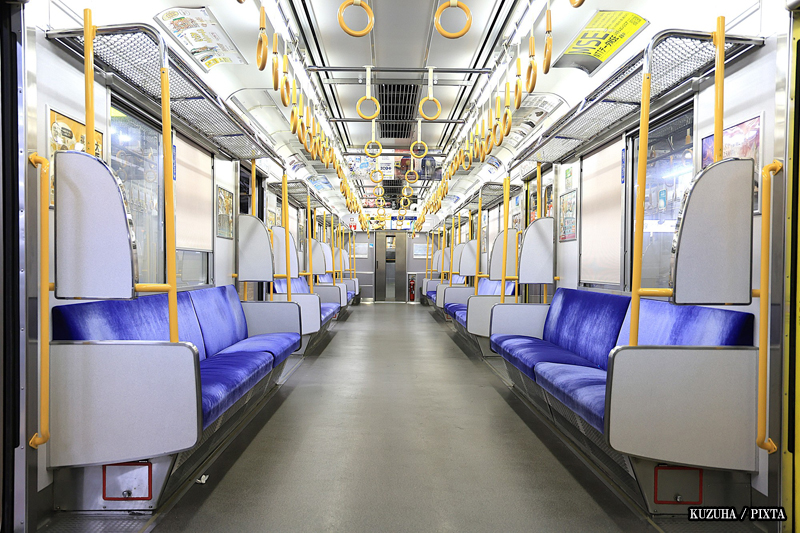
Photo for illustrative purposes
Suica-compatible transportation in Kyoto
When traveling around Kyoto, it’s important to know where Suica is accepted to make your journey easier. Here’s what you need to know:
Trains and rail lines
In Kyoto, using your Suica card is a convenient and efficient way to travel on most major rail lines. Whether you’re heading to the famous Kinkaku-ji or exploring the Arashiyama district, Suica is widely accepted, making your travels hassle-free.
JR West trains
Suica works perfectly on JR West trains, including popular lines like the JR Nara Line, JR Sagano Line, and JR Kyoto Line. Since JR West participates in Japan’s IC card interoperability network, Suica is accepted the same way as local cards like ICOCA. This means that you can use your Suica for seamless travel across all JR West lines without any issues.
Subways operated by Kyoto Municipal Subway
The Kyoto Municipal Subway also supports Suica, including both the Karasuma Line and the Tozai Line, which run through the heart of the city. With these two lines connecting major tourist destinations and transport hubs, Suica makes it easy to hop on and off without worrying about paper tickets or complicated fare systems.
Private railways
Private railways such as Keihan, Hankyu, and Kintetsu also accept Suica at ticket gates. These private lines connect Kyoto to nearby areas like Osaka and Nara, giving you even more flexibility when traveling within the Kansai region. Whether you’re exploring Kyoto’s outskirts or heading to neighboring cities, you can count on Suica to make your ride smooth and easy.
However, it’s important to note that Suica can only be used on rail routes that are part of the IC card network. Some less-traveled or rural lines may not accept IC cards like Suica. If you’re traveling to remote areas or less accessible parts of Kyoto, it’s always a good idea to check ahead to avoid any inconvenience.
Buses in Kyoto
Suica is also accepted on many buses throughout Kyoto, providing an additional layer of convenience for travelers. The most common bus systems that accept Suica include:
Kyoto city bus
Most city buses now support Suica, allowing you to tap your card upon boarding and exiting. However, it’s essential to check whether the specific bus route is included in the IC card network. Some more remote routes may not support Suica, so it’s advisable to look for the IC card logo on the bus or check with the driver before boarding.
Kyoto Bus Co.
Similar to Kyoto City Bus, Kyoto Bus Co. covers a range of city and regional routes that accept Suica. Make sure to verify the presence of the IC card symbol on the bus before using your card.
JR Bus Kansai
Routes operated by JR Bus in the Kansai region, including some in and around Kyoto, also support Suica. These buses are a convenient way to explore the outskirts of the city or travel to nearby areas.
Where else can you use Suica in Kyoto
Suica’s convenience extends far beyond trains and buses in Kyoto. It’s accepted at a wide variety of locations, making it easy for you to make contactless payments throughout the city. Here are some of the places where you can use your Suica for purchases:
Convenience stores
Suica is widely accepted at major convenience store chains throughout Kyoto. You can use your card at the following stores for quick purchases like snacks, drinks, or daily essentials:
- 7-Eleven
- Lawson
- FamilyMart
- Mini Stop
- Daily Yamazaki
Shops and restaurants
In tourist-friendly areas like Kyoto Station, Kawaramachi, Gion, and Arashiyama, many shops and restaurants accept Suica. Here are a few examples:
- Chain restaurants and fast food outlets
- Department stores
- Drugstores and souvenir shops, where you can pay for items like toiletries or local souvenirs
Vending machines and attractions
Thousands of vending machines across Kyoto now accept IC card payments, including those in train stations and tourist spots. Some temples, museums, and even certain taxis also accept Suica, though coverage can vary.
While shopping or dining in these areas, look for the “交通系IC” (Transit IC) symbol, which indicates the store accepts Suica and other compatible IC cards.
Suica vs ICOCA: What’s the difference
Although Suica works in Kyoto, it’s important to know that ICOCA is the native IC card of the Kansai region, issued by JR West.
Key differences:
| Feature | Suica | ICOCA |
|---|---|---|
| Issued by | JR East | JR West |
| Native region | Tokyo & Kanto | Kyoto, Osaka & Kansai |
| Usable in Kyoto? | Yes | Yes (native) |
| Interoperability | Nationwide IC network | Nationwide IC network |
Since Japan’s ten major IC cards—including Suica and ICOCA—became fully interoperable on 23 March 2013, either card will open virtually every train, subway, bus and IC-enabled ticket gate nationwide, rural Kansai lines included, so there is no real difference in transport acceptance.
What differs is their convenience:
- Availability & top-ups: stations, buses and convenience stores in Kansai default to ICOCA vending machines and recharge counters, whereas Suica kiosks can be scarce.
- Some shop terminals: a handful of PiTaPa-only checkout readers found in Kansai-area stores will accept ICOCA but will not read Suica, which can cause the odd hiccup when you try to pay for snacks or souvenirs.
Tips for using Suica in the Kansai area
To make the most of your Suica while traveling in Kyoto and nearby cities like Osaka, Nara, and Kobe, here are some practical tips:
Familiarize yourself with local fare zones
In the Kansai region, some routes may have different fare zones depending on the distance. Suica will automatically deduct the appropriate amount for your journey, but it’s useful to check local route maps or fare charts, especially if you’re traveling long distances or changing lines.
Use Suica for shopping in tourist areas
Beyond transportation, Suica can be a handy tool for making purchases at various shops in tourist hotspots like Kyoto Station, Gion, and Arashiyama. Keep your card handy for small purchases at souvenir shops, cafes, and convenience stores. It speeds up the checkout process and saves you from fumbling with cash.
Explore Suica-compatible vending machines
Kyoto is home to many vending machines, and you’ll find that some of them accept Suica. Whether you’re thirsty or need a quick snack, using Suica at these machines can save you time and make your purchases more convenient.
Track your Suica balance via smartphone
If you’re traveling with a compatible smartphone, consider using an app that either links to your Suica card for balance tracking and top-ups or simply scans your Suica card for information. This can be especially useful when you’re on the go and don’t want to worry about running low on funds. It also helps you keep track of your spending during your trip.
Plan your route using Suica-enabled apps
Some travel apps that work in Japan also integrate Suica functionality, allowing you to plan your routes more efficiently. You can use these apps to check train and bus schedules, map out your journey, and even find the nearest top-up locations, making Suica an even more powerful tool for navigation.
Keep a backup payment option
Although Suica is widely accepted, it’s not universal. Always carry some cash or a credit card in case you encounter a bus route or shop that doesn’t support IC cards.
Avoid double-tapping errors
Don’t tap your Suica card multiple times at gates or readers—this can lead to confusion or incorrect charges. One clean tap is enough.
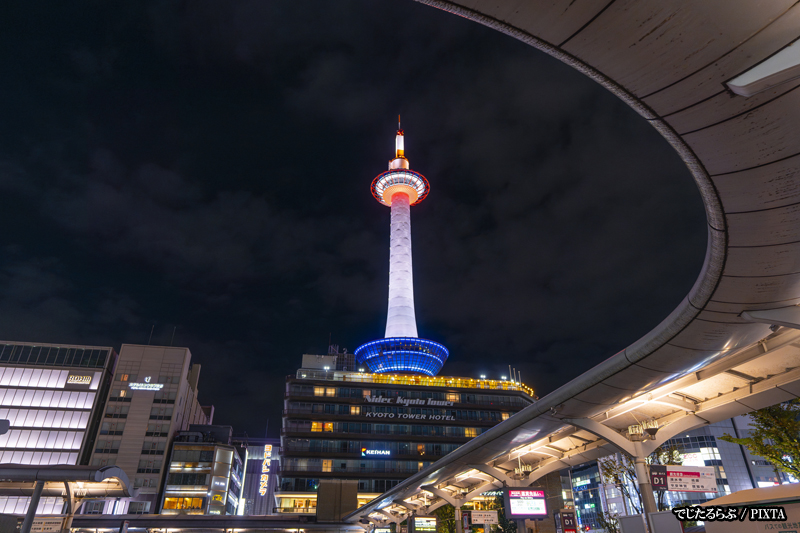
Photo for illustrative purposes
Suica compatibility beyond Kyoto
Suica’s reach extends far beyond just Kyoto or Tokyo. Thanks to nationwide interoperability, Suica can be used in these major regions:
- Osaka: Works across Osaka Metro, JR West, and buses.
- Nara: Use Suica on JR Nara Line, buses, and private rail.
- Kobe: Most transportation and many retail locations support Suica.
- Nagoya: While TOICA is the local card, Suica works on most JR and metro systems.
- Sapporo, Fukuoka, Hiroshima, and Sendai: All accept Suica via IC card agreements.
- Okinawa: While Yui Rail in Naha supports Suica, many buses only accept the local OKICA card.
However, Suica cannot be used for long-distance Shinkansen rides unless you book via compatible mobile services, nor can it be used for long-distance buses or on flights.
Common issues to watch for
Even in Kyoto, Suica might not work perfectly everywhere. Here are a few common issues and how to handle them:
“Card not recognized” message at gate
This usually happens when you’re at a gate incompatible with IC cards. Look for a gate with the IC logo or ask the station staff.
Not enough balance
If your card doesn’t have enough money, you won’t be able to exit the gate or board a bus. Use a ticket machine to top up your Suica or pay the fare difference at a fare adjustment machine.
Regional travel limits
IC cards like Suica are not always usable across entire long-distance trips. For example, if you travel from a Suica-supported area to a non-supported area (like a remote rural station), the IC card may not be accepted for the full route.
Final thoughts on using Suica in Kyoto
Suica offers a smooth and convenient way to explore Kyoto, seamlessly covering transportation options like trains, subways, and buses.
Kyoto is a city known for its rich history and cultural heritage, where respecting local customs is essential. When using Suica or any other services, always be mindful of the local way of life. For example, be considerate when boarding buses and trains, keep noise levels low, and show respect at temples and other peaceful sites.
If you already have a Suica, there’s no need to switch—it’s the perfect companion for navigating the city and experiencing the charm of Kyoto while respecting its traditions.







